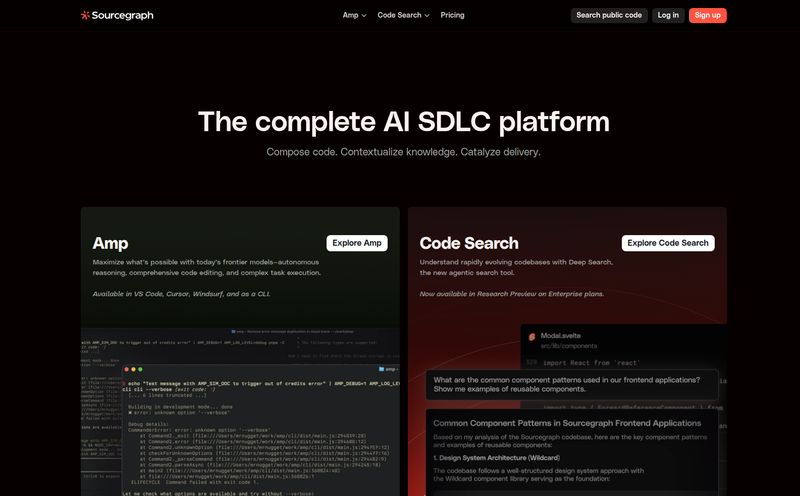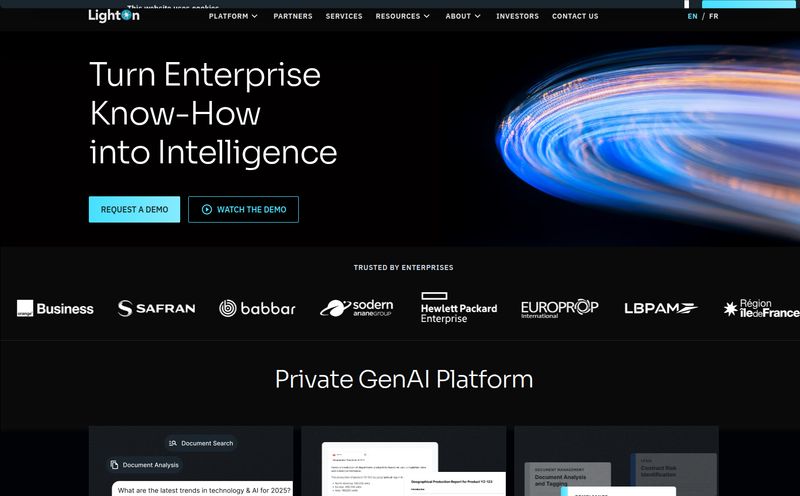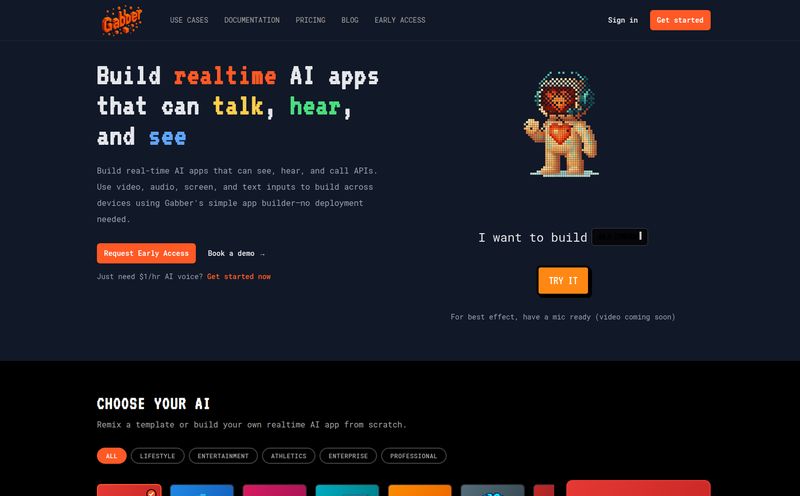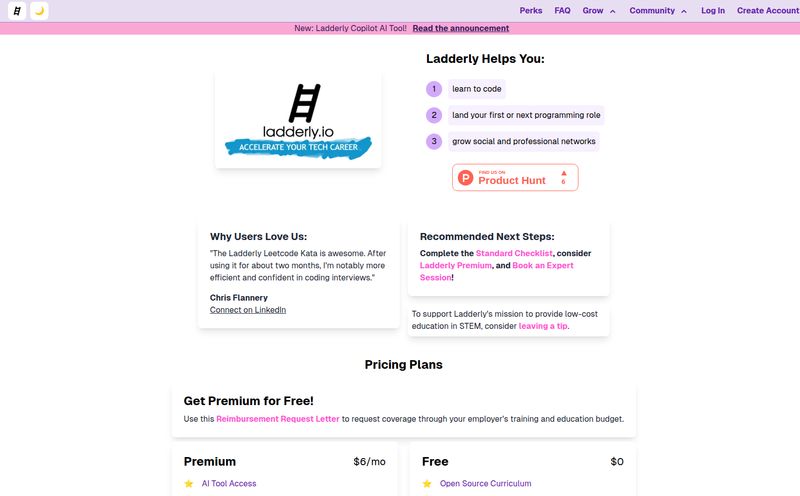I’ve been in the SEO and digital marketing world long enough to see trends come and go. I’ve seen tools launch with huge fanfare only to fizzle out, and I've seen quiet, nerdy projects suddenly change everything. And folks, I think Meta AI’s Segment Anything Model, or SAM as the cool kids call it, falls squarely into that second category.
It’s not every day that something comes along that makes you rethink a fundamental part of the internet—in this case, images. We spend so much time optimizing them, tagging them, and trying to get Google to understand what’s in them. SAM feels like a massive leap forward in that conversation. It's not just another filter or a fancy editing tool. It's different.
So, What on Earth is the Segment Anything Model?
Imagine you have the magic wand tool from Photoshop. We all know it, right? You click on a blue sky, and it selects… most of the sky, plus a bit of that building, and for some reason, a chunk of your uncle’s bald head. It’s useful, but clumsy.
Now, imagine that magic wand went to MIT, got a PhD in computer vision, and can now identify literally anything you point it at, instantly, with terrifying precision. That’s SAM. In more technical terms, it's a “promptable segmentation system.”

Visit Segment Anything | Meta AI
What does that mean? It means you can 'prompt' the model—by clicking on an object, drawing a box around it, or eventually, even with text—and it will perfectly 'segment' or cut out that object from its background. And here’s the kicker: it can do this for objects it has never, ever seen before. No extra training needed. That's the part that got my attention.
Why SAM Is More Than Just a Cool Tech Demo
I get it, we see a lot of flashy AI demos these days. But SAM’s potential is rooted in some seriously impressive capabilities. It's not just about making memes easier to create (though it will definitely do that).
Mind-Blowing Zero-Shot Generalization
This is the secret sauce. The term “zero-shot” is huge in the AI space. It means the model doesn't need to be specifically trained on a new type of object to understand it. Meta trained SAM on an absolutely colossal dataset they built called SA-1B, which contains over a billion masks from 11 million images. Because of this insane library of knowledge, it learned the concept of what an 'object' is. A dog, a car, a coffee mug, a weird-looking lamp in the background of a blurry photo… SAM can identify the boundaries of all of them without needing prior examples. This is a massive step away from older models that would fail if you showed them something just slightly out of their training data.
A Truly Interactive and Flexible AI
This isn’t some black box where you feed in an image and hope for the best. SAM is designed to be interactive. You can click a single point on an object, and it will make a smart guess. If it’s not quite right, you can add another point to clarify. Or you can just draw a rough box around something. It feels less like commanding a machine and more like collaborating with a very, very fast and skilled assistant. This promptable design makes it incredibly powerful for all sorts of real-world applications where human oversight is still important.
It’s Surprisingly Efficient
Often, these groundbreaking AI models require a server farm in Antarctica to run. But Meta designed SAM to be remarkably efficient. The image encoder part is a bit heavy, sure, but the prompt-based mask decoder is lightweight enough to run in a web browser in real-time. This is crucial! It means developers can realistically build tools that use SAM without asking users to have a supercomputer. Accessibility is key for adoption, and they seem to have nailed that part.
Okay, Let's Be Honest, It's Not Perfect (Yet)
As much as I'm geeking out about this, it’s important to keep our feet on the ground. SAM is a foundational model, not a finished consumer product, and it has some limitations. For one, it currently only works on static images or individual video frames. You can't just feed it a video file and have it track an object automatically through the whole clip. That’s a much harder problem to solve.
It also doesn’t produce labels for what it segments. It can cut out the cat with surgical precision, but it doesn't tell you “this is a cat.” It just knows it's a distinct object. You’d need to pair it with another AI model, like a CLIP model, for that kind of classification. And while the original research paper mentions exploring text prompts (e.g., typing “cut out the dog”), that feature hasn't been released to the public yet. I am personally waiting for this with bated breath—imagine the possibilities for automated image SEO when you can just command an AI to 'isolate the product in this lifestyle shot'.
Finally, to get the best performance out of the image encoder, you'll want a decent GPU. While the decoder is lightweight, the initial 'analysis' of the image benefits from some hardware muscle, which might be a barrier for some developers.
Practical Uses for SEOs, Marketers, and Creatives
So how does this actually affect us? The people in the trenches of content and traffic?
- Content Creation: The most obvious use. Graphic designers can spend less time on tedious masking and more on creativity. Removing backgrounds, creating collages, or isolating elements for thumbnails becomes a trivial task.
- Enhanced Image SEO: By integrating SAM with other AI, we could soon have tools that automatically identify every single object in an image, helping to generate incredibly detailed and accurate alt text and image object data. This could be a huge boost for visual search.
- E-commerce: Imagine automatically generating clean, background-free product shots from user-submitted photos or lifestyle images. Or creating interactive shopping experiences where users can click on any item in a photo to get more information.
- Data Augmentation: For those in the machine learning space, SAM is a goldmine for creating high-quality training data. You can generate millions of segmented object masks to train other, more specialized computer vision models.
What's the Price Tag on This Magic?
Here’s the best part. Meta has released SAM under a permissive open-source license (Apache 2.0). They’ve also made the massive SA-1B dataset available for research purposes. This isn't a product they're selling. It's a foundational technology they are giving to the community to build upon. This is a classic move from big tech research labs—release a powerful tool, let the community find amazing uses for it, and advance the entire field. So, for now, the price is $0. You can't beat that.
My Final Take as an SEO Nerd
I’ve seen a lot of tools that promise to change the game. Most don't. SAM feels different. It represents a fundamental building block for the next generation of visual AI. Its ability to understand objects without specific training is a monumental step forward. For SEO, this points to a future where search engines don't just read our text, they see our images with a level of comprehension that's almost human.
The immediate impact will be on our toolsets. Expect to see SAM integrated into everything from Canva to specialized SEO software. The long-term impact? A more visual, more intuitive, and more intelligently indexed web. It’s an exciting time to be working with online content, that's for sure.
Frequently Asked Questions about SAM
- What is the Segment Anything Model (SAM)?
- SAM is a foundational AI model from Meta AI that can “cut out” or segment any object from any image with high precision, often with just a single click. It's notable for its zero-shot capabilities, meaning it can identify objects it wasn't specifically trained on.
- Is Meta's SAM free to use?
- Yes, the model has been released under a permissive open-source license (Apache 2.0), and the accompanying dataset (SA-1B) is available for researchers. This means developers can use and build upon it for free.
- Can SAM understand text prompts?
- Not in the current public release. The research paper from Meta AI discusses the potential for text-prompting, but as of now, users prompt SAM using clicks (points) and boxes drawn on the image.
- How is SAM different from other image segmentation tools?
- The main difference is its zero-shot generalization. Most older tools require extensive training on specific categories of objects (e.g., training a model just for cats). SAM was trained on such a massive and diverse dataset that it learned the general concept of an 'object', allowing it to segment almost anything without additional training.
- What is “zero-shot” segmentation?
- Zero-shot refers to an AI model's ability to perform a task on new, unseen data without having been explicitly trained on that type of data. In SAM's case, it can segment a picture of a rare, exotic fruit even if it never saw one in its training data, because it understands the underlying properties of what makes an object an object.
- Who should use the Segment Anything Model?
- Primarily, SAM is for developers, researchers, and AI engineers who want to build applications on top of it. It's not a standalone app for end-users, but rather a powerful engine that will be integrated into future creative, analytical, and e-commerce tools.
Conclusion
So, is the Segment Anything Model the be-all and end-all of computer vision? No, it’s a stepping stone. But it’s a huge one. It democratizes a very powerful capability and puts it into the hands of creators and innovators everywhere. By making the complex task of image segmentation almost trivially easy, SAM clears the way for a whole new wave of visual AI applications. I, for one, will be watching very closely to see what people build with it. The future of visual content just got a lot more interesting.



